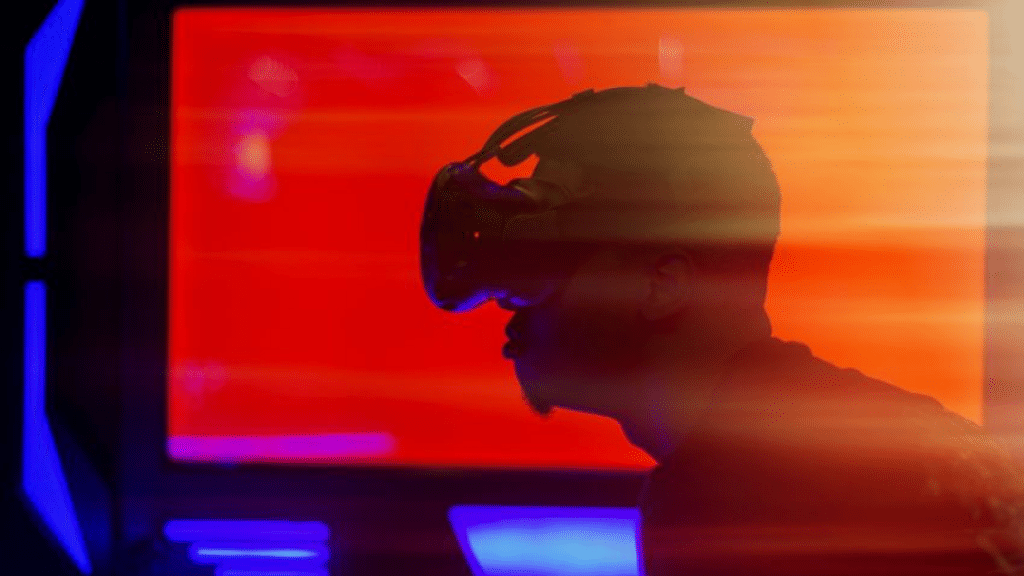VR and AR are cutting-edge gaming technologies that create interactive, immersive, and engaging experiences. VR takes players into the digital world, creating a sense of realism. AR adds digital features and elements to the real world, combining digital and physical gameplay.
Video game development companies make substantial efforts to incorporate VR and AR in their games to ensure innovative storytelling, social interactions, and intuitive controls. Thus, this is all about transforming how video gamers experience their favorite games.
Video Games That Use VR and AR
- Half-Life: Alyx
- Beat Saber
- Superhot VR
- Elder Scrolls V: Skyrim VR
- Pokemon Go
- The Walking Dead: Our World
- Ingress Prime
- Harry Potter: Wizards Unite
The use of VR and AR is not just limited to traditional video games. Online casinos are starting to offer VR experiences that recreate the atmosphere of a real casino, allowing players to play adventure-theme slot machines.
According to Pablobetonline, even eSports betting is getting in on the action, with AR overlays providing real-time stats and visualizations during matches. These technologies are changing how we interact with digital entertainment across the board.
How will AR Impact Game Design?
AR forces developers and designers to think beyond the screen, fusing the digital world with the player’s physical space. Imagine enemies lurking behind real furniture or a UI projected onto the user’s coffee table. This means mastering spatial mapping, occlusion (hiding virtual objects behind real ones), and environmental understanding.
Gameplay could involve physical actions like dodging, gesture-based spells, or location-based triggers. Challenge yourself with persistent AR worlds, where virtual graffiti on a real building unlocks a secret level.
Optimize for mobile hardware limitations and design intuitive, non-intrusive UIs that complement, not clutter, the real world. However, there are some limitations to designing and developing AR games.
- AR games need powerful devices to work well.
- Players can get hurt if they are not careful.
- Making AR games can be expensive.
- AR games track where you are, which can be a problem for some people.
- AR games use a lot of battery power.
- It is hard to make AR games that are fun and look good.
AR vs VR for Video Games from Developers’ Perspective
Choosing between AR and VR depends on your game’s goals. AR is more accessible because people can play on their phones, and it makes sharing experiences with others in the real world easier. However, AR games can be interrupted by things in the real world, and phone limitations can make the graphics less impressive.
VR provides a more immersive experience with better graphics and controls, but it requires expensive equipment and can make some players feel sick. VR is also usually a solitary experience.
AR is better for games that use real-world locations and encourage social interaction. VR is better for games that need detailed graphics and let players escape into another world. The best choice depends on your project, who you want to play it, and the kind of experience you want them to have.
Beyond AR and VR Technologies in Video Gaming
Future technologies could surpass the current trending technologies in gaming, including AR and VR. Haptic feedback suits will provide tactile sensations, enhancing immersion. Brain-computer interfaces (BCIs) might allow direct control of games through neural signals, creating seamless interactions.
Artificial Intelligence (AI) will enable more adaptive and intelligent game environments. Quantum computing could revolutionize game processing power, enabling complex simulations and real-time rendering.
Quantum computing will revolutionize game processing power, enabling complex simulations and real-time rendering. Cloud gaming allows high-quality gaming on any device by streaming games from powerful servers.
5G technology will increase the speed of the internet and enhance mobile gaming with faster, more reliable connections. Mixed Reality (MR) combines AR and VR to create hybrid environments.
Moreover, neural interfaces enable direct interaction between the human brain and computers, potentially allowing thought-controlled gameplay. Thus, these technologies will drive the future of gaming.
Is it Too Early for Advanced Technologies In Gaming?
What are the risks of these cutting-edge video gaming technologies? That’s an important question. While advanced gaming technologies like AR, VR, quantum computing, cloud gaming, 5G, mixed reality, and neural interfaces offer exciting possibilities, they also pose potential risks.
AR and VR can cause motion sickness and eye strain due to prolonged use. Quantum computing and cloud gaming raise concerns about data security and privacy. 5G technology may lead to increased exposure to electromagnetic fields, though research is ongoing.
Mixed reality can blur the line between real and virtual worlds, potentially affecting mental health. Neural interfaces involve direct brain interaction, which could have unknown long-term effects. That’s why we think balancing these technologies with safety is very important to avoid complications.
